5 Tips for chilling Fino
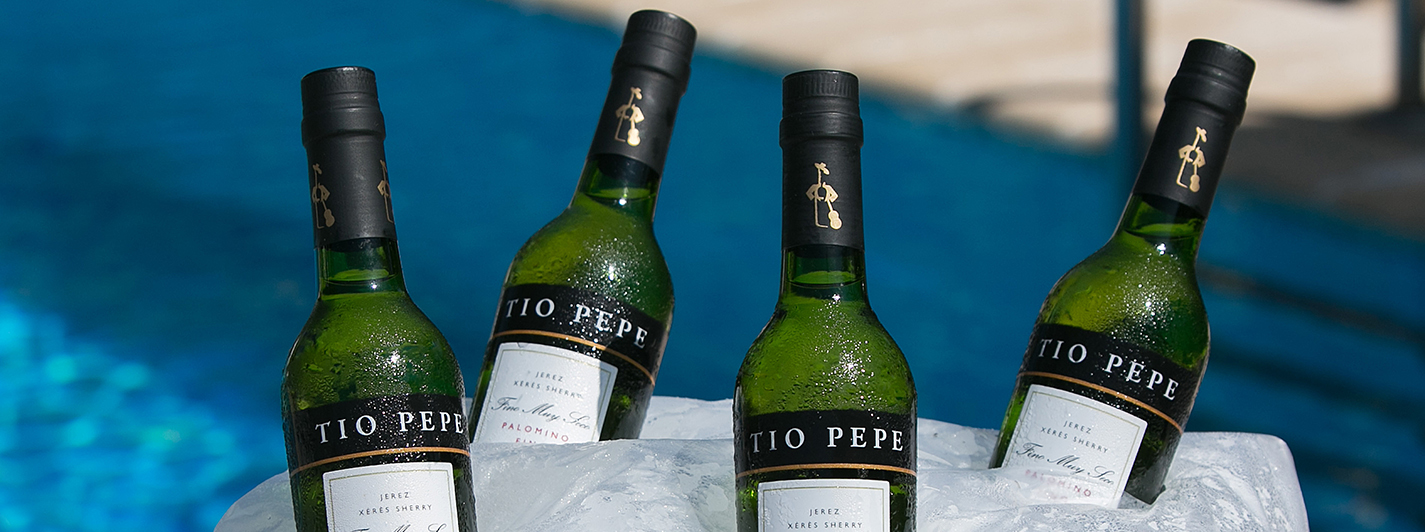
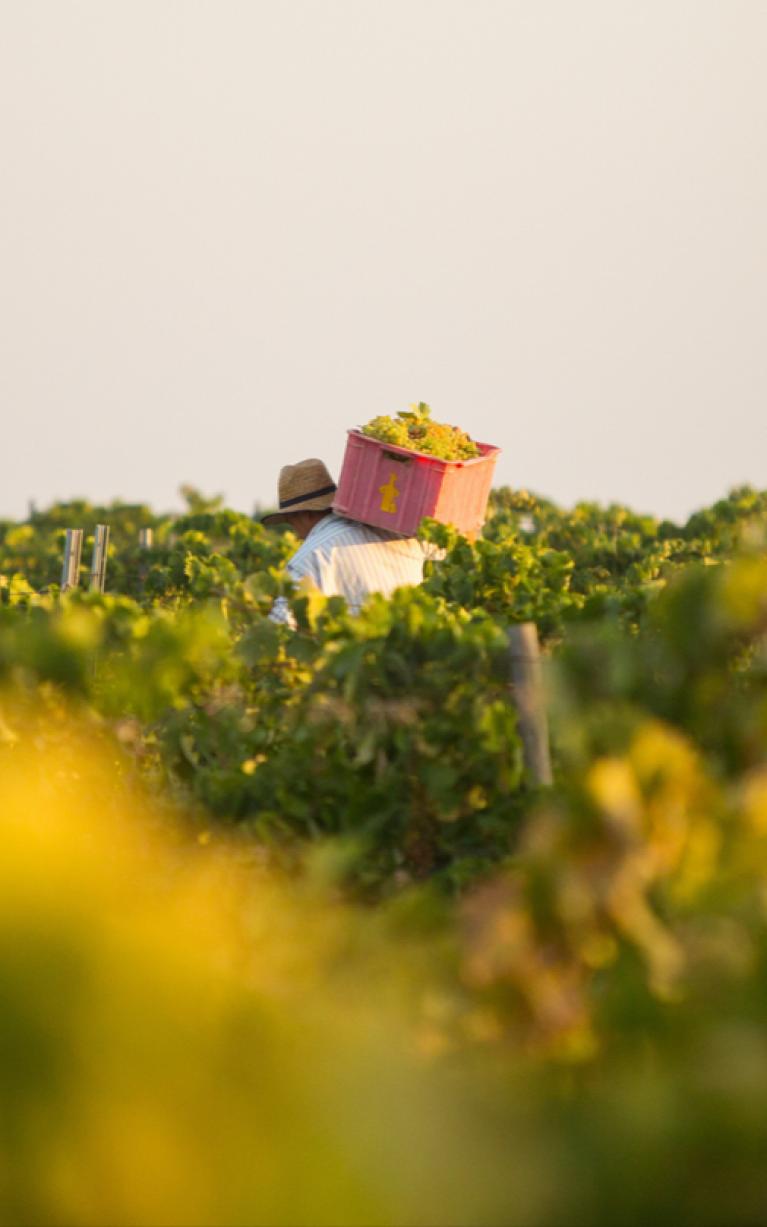
The wealth of varieties and nuances that characterise sherry wines lie in each individual step of their production: a unique process that has been perfected over the years, turning these wines into true oenological treasures.
Will you join us?
The most famous and nuanced from our wide range of sherry wines. As their name suggests, they have a minimal sugar content due to a process of complete fermentation; their unique production is unlike anything in the world and hides many more secrets. Ready to find out more?
Dry wines originate from the vineyards of Palomino Fino, the star variety in the cultivation region of Marco de Jerez. The harvest begins in early September, when the grapes reach their ideal sugar content..
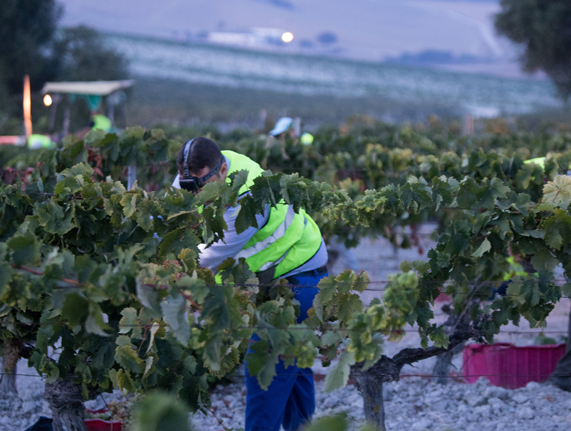
The harvest process.
There are three levels of must quality, which are produced depending on the amount of pressure used. The first pressing (primera yema) is extracted without using much pressure, and is used for Finos or Manzanillas. The second press uses a slightly higher pressure to achieve a greater structure from more of the solids, producing the Olorosos. Finally, the wine press is used for stronger alcohol derived from wine, such as brandy..
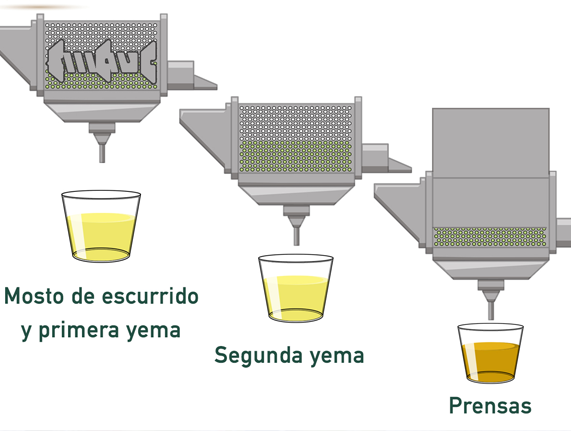
The different levels of pressure.
Fermentative yeasts are responsible for carrying out the biochemical phenomenon that causes the sugars to transform into alcohol – a natural process that takes place inside large stainless-steel tanks where the must remains until the arrival of colder weather. This gave rise to the popular dictum: “En San Andrés, el mosto vino es” or:.
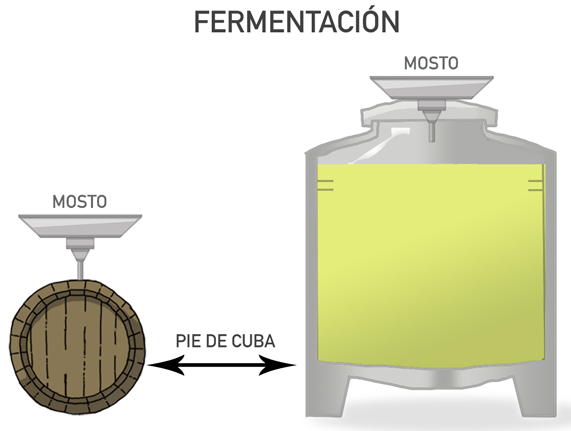
The fermentation process.
After separating the liquid from the lees that have accumulated in the bottom of the tank, it’s time for one of the most fundamental steps in the production of sherry wines. Taking into account factors such as the origin of the grapes or their organoleptic qualities, the oenologist decides what ageing process to use – biological or oxidative..
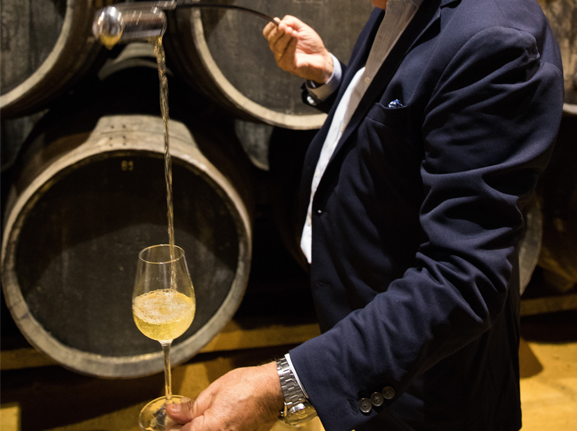
The settling.
Varieties of sweet grape, traditional drying techniques and limited fermentation that retains a large amount of sugar – these are just some of the secrets involved in producing these natural sweet wines without added sugar (their sugar levels tend to be between 220 and 400 g/L). A real treat for those with a particularly sweet tooth.
Sweet wines are made with the Pedro Ximénez and Moscatel grape varieties, since these grapes have a higher potential in concentrating sugars. Once they have been collected, the grapes are spread out on straw mats in the vineyards for 7 to 15 days – a process of artisanal over-ripening called 'asoleo', which turns the grapes almost into raisins, evaporating around 40% of their water content, and concentrate sugars..
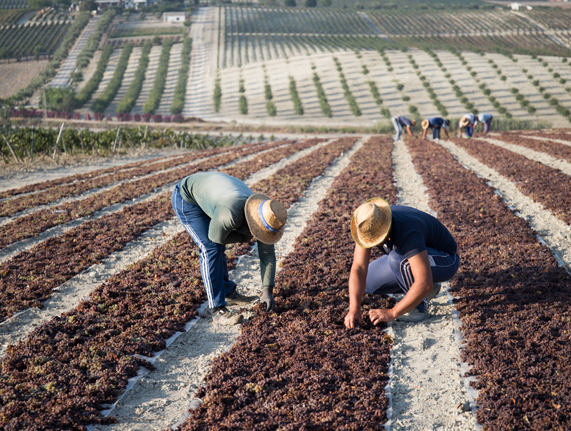
The natural process of asoleo.
After the asoleo process, the grapes arrive to the wine press. Here the grapes go through two different press: A horizontal press and subsequently a harder vertical press. As the grapes are partially dried, they require higher pressure and provide a significantly inferior yield..
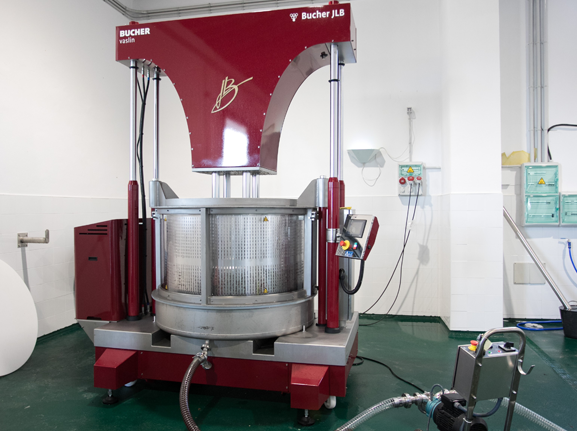
Traditional wine press
Yeast fermentation occurs in large stainless-steel tanks, transforming the sugar into alcohol. When it comes to sweet wines, fermentation naturally stops at around 6%, at which point we add pure grape spirit until it reaches 15%. .
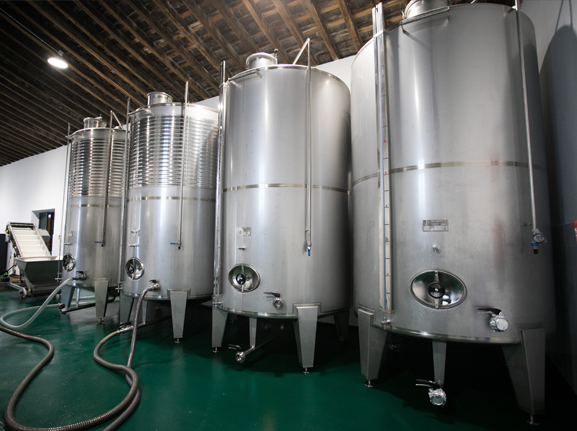
The fermentación process in large stainless-steel tanks.
It’s time to begin the exclusively oxidative aging process, where our butt enters the traditional criaderas and soleras system, one of the best kept secrets in the sherry wine industry. The butts are dispersed throughout rows at different heights, the highest containing the newest wines and the closest to the ground containing the oldest ones. The key lies in the constant movement of the upper butts to the lower butts, allowing the younger wines to acquire the characteristics of older wines, perpetuating uniform quality criteria over time..
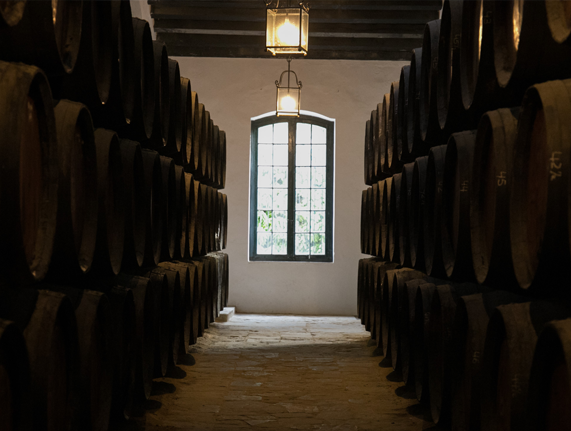
Barrels for the traditional criaderas and soleras system.
These monovarietal wines get their names from the grapes from which they are made, namely Moscatel and Pedro Ximénez. The traditional technique of sun-dying grapes gives them their characteristic sweetness without compromising the aromatic complexity.
Within the sweet wines exists another group whose production revolves around the blending or fortifying of generoso wines with natural sweeteners or, in some cases, concentrated musts. Wines with a sugar content of over 5 g/L originate directly from the British tradition, which would use these blends to adapt sherry wines to local tastes..
Blends, or cabeceo wines, are sherries that come from the combination of an originally dry wine and a naturally sweet wine or rectified concentrated must. Different types of blends are distinguished by their sugar content and the type of wine used in their production. Learn more!
At this exciting stage, the wine is joined by a very special guest, who will have a decisive influence on the unique organoleptic characteristics of the finest Finos and Manzanillas.
In Spanish they are known as 'vinos generosos' – literally ‘generous wines’ – because they are fortified by adding alcohol derived from grapes which, in the case of biological ageing, to 15-15,5% ABV. This is the ideal environment for the yeast to thrive and produce the famous Velo de Flor..
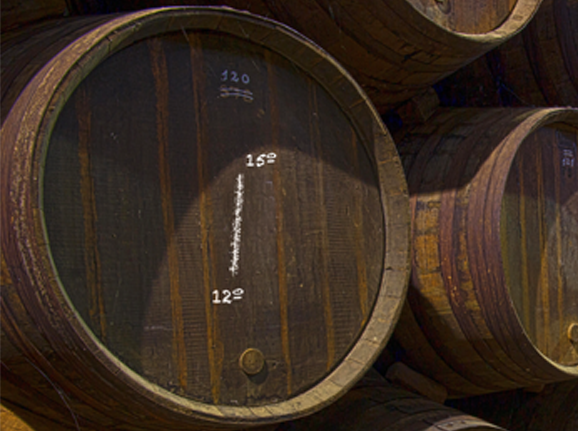
Barrel of Fino wine ageing.
One of the most extraordinary elements of sherry winemaking. The velo de flor is a variety of yeast that naturally grows in the Marco wine cellars, settling like a veil on the surface of the wine. This layer prevents it from coming into contact with oxygen and consuming certain components that would change its organoleptic characteristics. The velo de flor requires very specific environmental conditions in order to survive. For this reason, everything in the sherry wine cellars, from their architecture to their temperature and orientation, is designed to encourage ideal conditions for velo de flor development. .
Image of the velo de flor covering the wine.
After a phase of overflows that range from four to six months, during which time the oenologist's decision with regard to the wine’s ageing should be verified, we encounter another great secret of sherry wines. For the traditional criaderas and soleras system, the American oak butts – where biological ageing takes place – are arranged in rows at different heights. The wines are placed in order of age, with the upper rows containing the younger wines, and the one closest to the ground, known as the solera, containing the oldest wine. This ensures that the younger wines acquire the qualities of the older wines to reproduce the same characteristics over the years..
Barrels arranged according to the traditional system of criaderas and solera of the sherry wines.
Discover a dry white wine that conveys what makes the Jerez region so special. Tío Pepe is the leading Fino sherry producer, and without a doubt the world’s most famous Fino sherry.
After seven or eight years, the microorganisms responsible for the velo de flor begin to lose vitality, producing a weakened, uneven and patchy veil that allows the wine to oxidise. When the flor falters, Amontillado sherry flourishes and the wine cellars ring out with cries of….
Whether due to the changeable conditions in its origin or the wide range available depending on the balance between the two types of aging, there are few wines that are as interesting and complex as Amontillado sherry. It’s a surprising and seductive wine with phenomenal pairing possibilities.
Like a sliced apple exposed to air, the wine oxidises when it comes into contact with oxygen, acquiring a golden amber tone and radically different organoleptic qualities. Let’s experience them!
When it comes to oxidative ageing, the base wine is fortified with pure grape spirit to either 17 or 18% ABV. In González Byass, we fortify to 18%, ensuring that we prevent the development of the Velo de Flor and this way we ensure that the wine stays in direct contact with the oxygen during the entire ageing process..
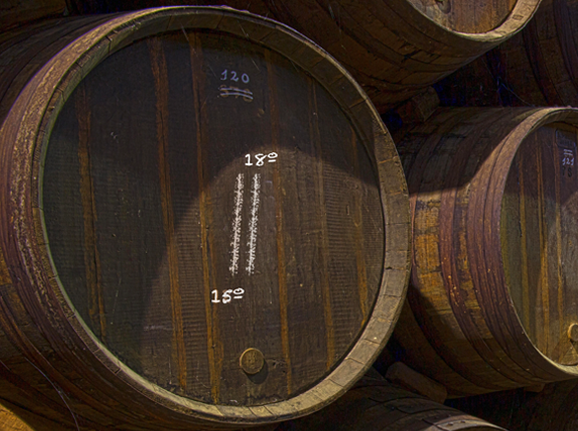
The ageing process in sherry wine.
If during the sobretablas period (from five to nine months) it is confirmed that the winemaker was correct in their decision to begin the process of oxidative aging, the butt will enter the traditional criaderas and soleras system. The process begins with the youngest criadera (or tier) of the Oloroso soleraje, located in the upper rows. The lower rows, or soleras, contain the older wines. Over time, our wine will continue to evolve and oxygenate as it moves from top to bottom, allowing it to acquire and reproduce the characteristics of older wines..
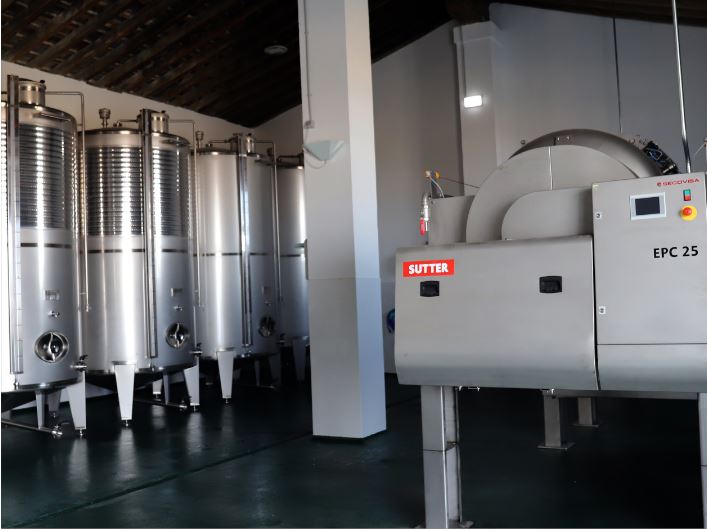
Oloroso sherry is known as a vocational wine. From the beginning, its special features have whispered to wine tasters that it was destined to become one of the most structured and complex wines from Jerez.
In times gone by, the Palo Cortado originated as a result of a happy accident involving fortified wine: a wine originally intended to be biologically aged would become too strong by over 15%, thus preventing the growth of the velo de flor. The overseer would draw a single line through the initial dash on the butt, “cutting” it in half and resulting in the name of this wine that remains so shrouded in mystery. Today, our winemakers can detect any exceptional musts with the potential to become a Palo Cortado and introduce them to the oxidative aging process, using butts historically reserved for major Palo Cortado sherries. .
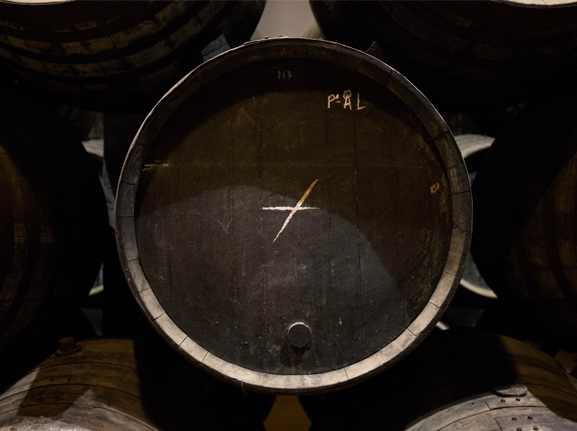
Palo Cortado is a rare and marvelous wine that combines the delicate nose of Amontillado with the structured mouthfeel of Oloroso. As a meditation wine, it must be enjoyed slowly to experience the most mysterious nuances characteristic of sherry wine.